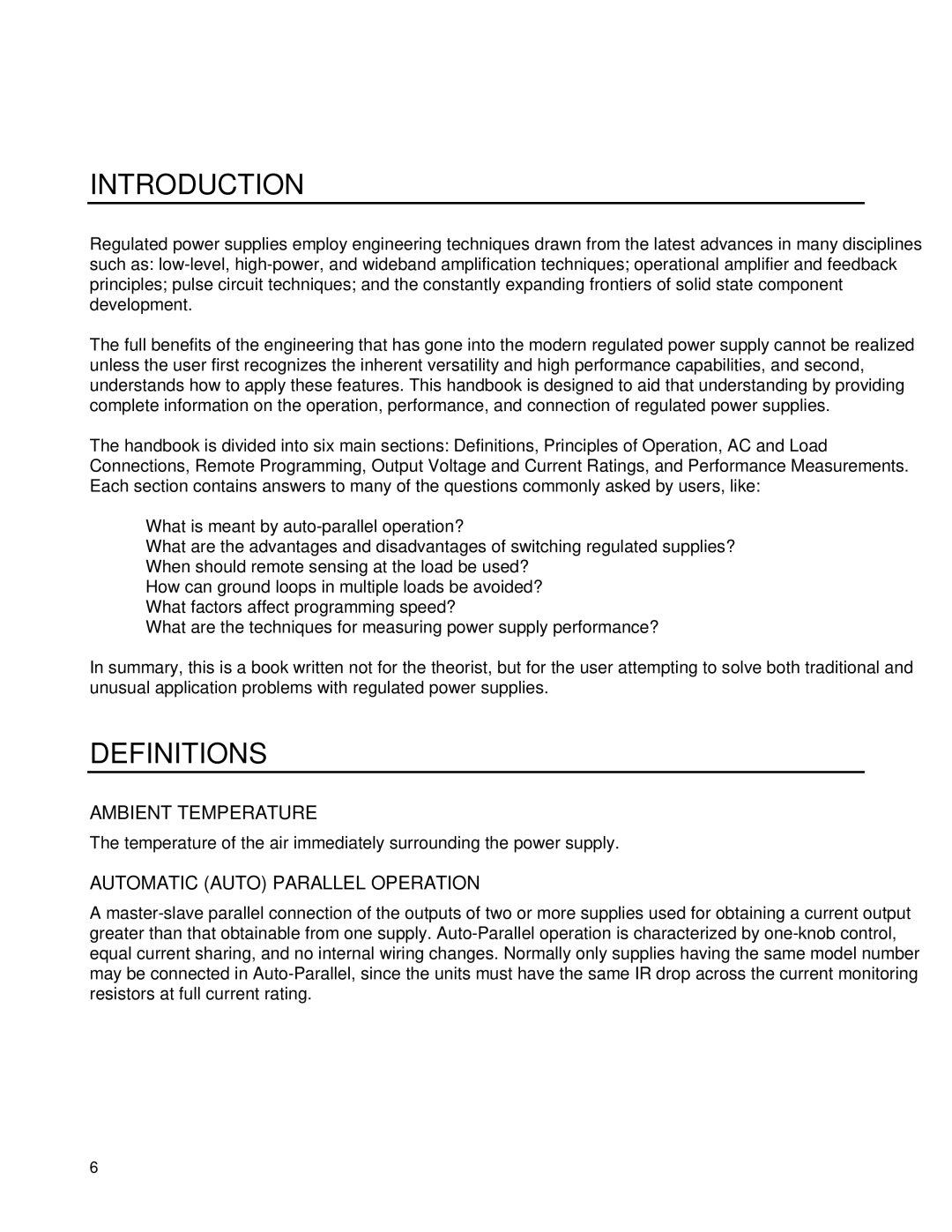
INTRODUCTION
Regulated power supplies employ engineering techniques drawn from the latest advances in many disciplines such as:
The full benefits of the engineering that has gone into the modern regulated power supply cannot be realized unless the user first recognizes the inherent versatility and high performance capabilities, and second, understands how to apply these features. This handbook is designed to aid that understanding by providing complete information on the operation, performance, and connection of regulated power supplies.
The handbook is divided into six main sections: Definitions, Principles of Operation, AC and Load Connections, Remote Programming, Output Voltage and Current Ratings, and Performance Measurements. Each section contains answers to many of the questions commonly asked by users, like:
What is meant by
What are the advantages and disadvantages of switching regulated supplies?
When should remote sensing at the load be used?
How can ground loops in multiple loads be avoided?
What factors affect programming speed?
What are the techniques for measuring power supply performance?
In summary, this is a book written not for the theorist, but for the user attempting to solve both traditional and unusual application problems with regulated power supplies.
DEFINITIONS
AMBIENT TEMPERATURE
The temperature of the air immediately surrounding the power supply.
AUTOMATIC (AUTO) PARALLEL OPERATION
A
6
